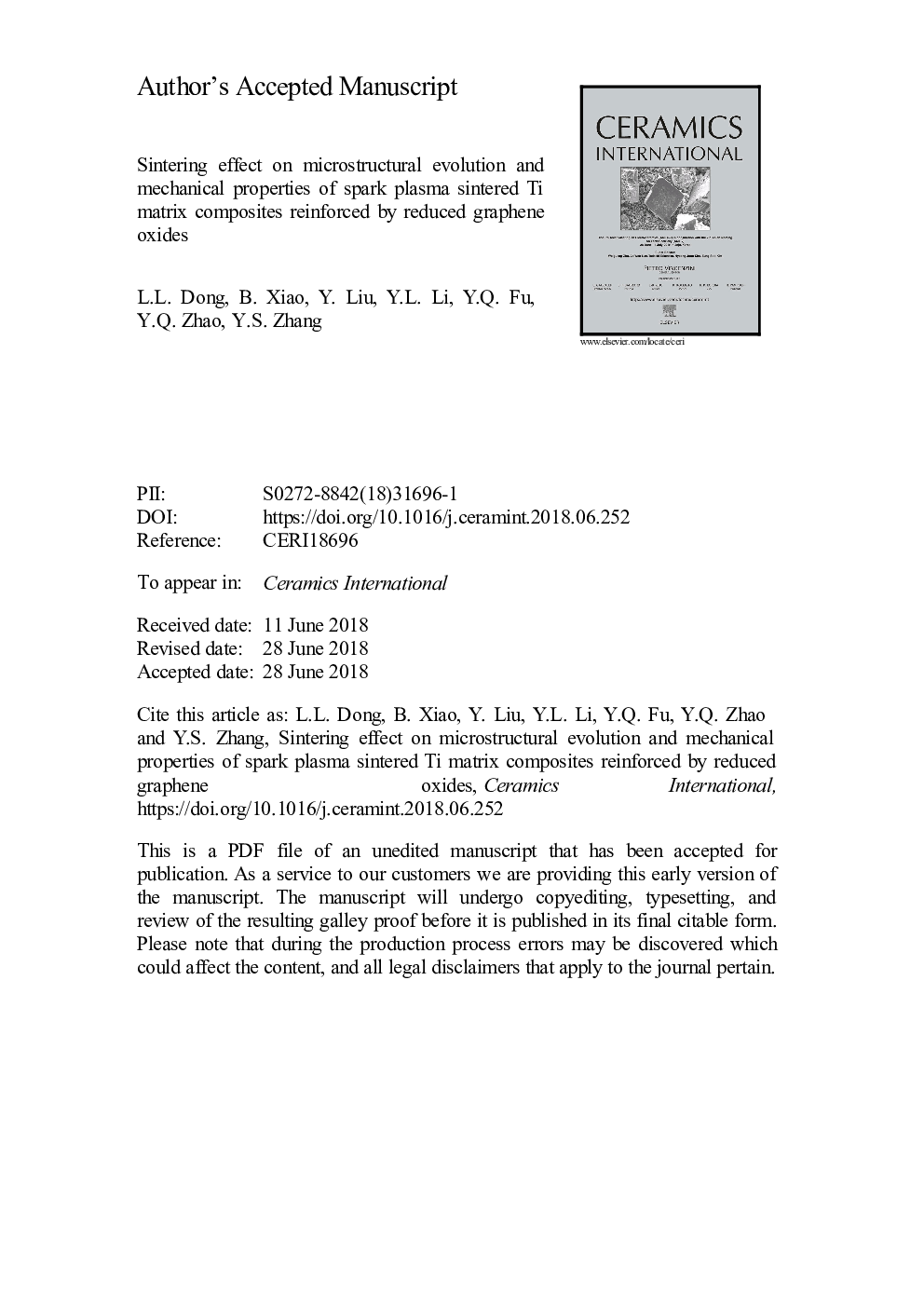| Article ID | Journal | Published Year | Pages | File Type |
|---|---|---|---|---|
| 8948455 | Ceramics International | 2018 | 34 Pages |
Abstract
Ti matrix composites reinforced with 0.6â¯wt% reduced graphene oxide (rGO) sheets were fabricated using spark plasma sintering (SPS) technology at different sintering temperatures from 800â¯Â°C to 1100â¯Â°C. Effects of SPS sintering temperature on microstructural evolution and mechanical properties of rGO/Ti composites were studied. Results showed that with an increase in the sintering temperature, the relative density and densification of the composites were improved. The Ti grains were apparently refined owing to the presence of rGO. The optimum sintering temperature was found to be 1000â¯Â°C with a duration of 5â¯min under a pressure of 45â¯MPa in vacuum, and the structure of rGO was retained. At the same time, the reaction between Ti matrix and rGO at such high sintering temperatures resulted in uniform distribution of micro/nano TiC particle inside the rGO/Ti composites. The sintered rGO/Ti composites exhibited the best mechanical properties at the sintering temperature of 1000â¯Â°C, obtaining the values of micro-hardness, ultimate tensile strength, 0.2% yield strength of 224 HV, 535â¯MPa and 446â¯MPa, respectively. These are much higher than the composites sintered at the temperature of 900â¯Â°C. The fracture mode of the composites was found to change from a predominate trans-granular mode at low sintering temperatures to a ductile fracture mode with quasi-cleavage at higher temperatures, which is consistent with the theoretical calculations.
Related Topics
Physical Sciences and Engineering
Materials Science
Ceramics and Composites
Authors
L.L. Dong, B. Xiao, Y. Liu, Y.L. Li, Y.Q. Fu, Y.Q. Zhao, Y.S. Zhang,
